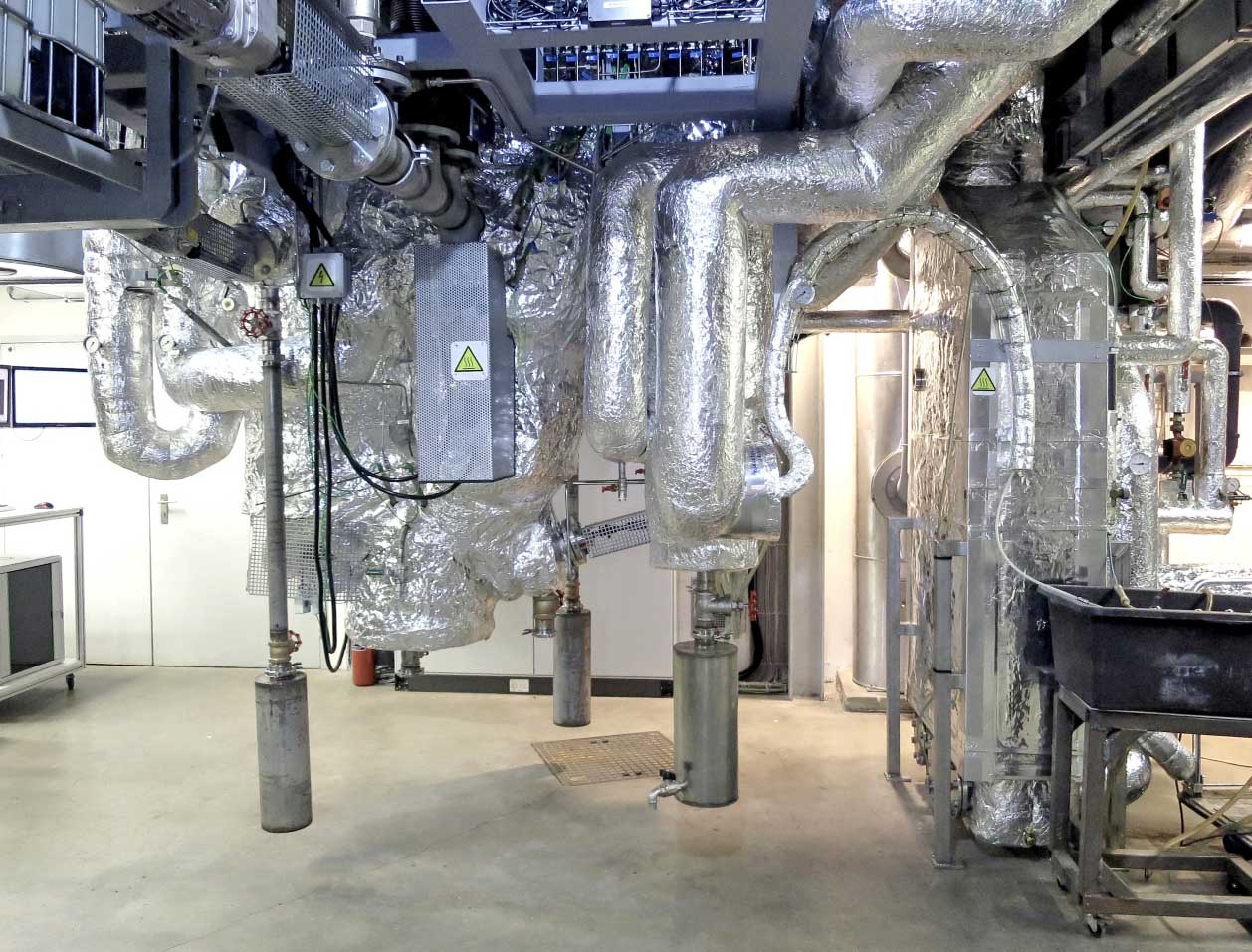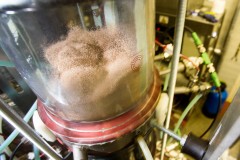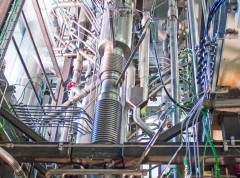In the ERA-NET project OxyCar-FBC1, an Austrian-Swedish consortium of research institutions and industry players is developing two new processes for efficient and climate-friendly generation of energy from biomass. TU Wien (Vienna University of Technology), Institute of Chemical, Environmental and Bioscience Engineering is working together with Bertsch Energy (Bludenz), Chalmers University of Technology (Göteborg) and the energy supplier Göteborg Energi.
In 2018, Austria saved roughly 9.9 million tonnes of CO2 equivalent through the use of solid biogenic fuels.
www.bmvit.gv.at/themen/innovation/publikationen/energieumwelttechnologie/biooekonomiestrategie.html
Innovative Concept
The fluidised bed method, a robust, flexible and low-emission combustion technology, is frequently used today for the combustion and gasification of biomass. Quartz sand generally serves as the fluidised bed material. The key approach of OxyCar-FBC is to replace the typical bed material partially or entirely with metal oxides. These “oxygen carriers” are oxidised when they come into contact with air, and reduced when they come into contact with fuel, thus allowing them to act as selective oxygen transporters. These attributes will be leveraged to make the fluidised bed method more efficient, and to separate out the CO2 produced by combustion directly within the process. The “OCAC” method could be implemented on an industrial scale in a short period of time, and the “chemical looping combustion” technology has the potential to make thermal biomass utilisation significantly more efficient and environmentally friendly over the long term.
Oxygen Carrier Aided Combustion (OCAC)
In typical fluidised bed combustion setups for biomass or waste, one of the greatest challenges is mixing the fuel and air needed for combustion sufficiently. A local oxygen shortage often arises in the vicinity of the fuel infeed, while a large excess of air prevails in areas farther away. There are also fluctuations due to the fuel composition (e.g. the water content) and the quantity of fuel. To even out these fluctuations, a 20% excess of air must be present in the combustion chamber. In the OCAC method, the typical bed material is replaced by an oxygen carrier that can buffer the oxygen and transport it within the fluidised bed. This substance absorbs the oxygen in the fuel lean zones and releases it again in the fuel rich zones, solving mixing problems and making the combustion more efficient.
Initial tests have shown that the excess air ratio can be reduced and CO peaks can be avoided. With fewer temperature hot spots thanks to more homogeneous combustion, the nitric oxide emissions can be reduced by 30%. Suitable oxygen carriers have been identified in the project, and the next step is to begin trials on an industrial biomass plant with a fuel power of 100 MW.
Chemical Looping Combustion (CLC)
The second method is an entirely new combustion technology in which the resulting CO2 is separated directly. The combustion is divided into two reaction zones (e.g. two fluidised beds). An oxygen carrier is also used as bed material in this process. In the “air reactor”, the carrier is oxidised by the combustion air, while in the “fuel reactor” it is reduced through contact with the fuel. The result are two exhaust gas flows: The exhaust gas from the air reactor consists of nitrogen and residual oxygen, while that of the fuel reactor consists exclusively of the combustion products CO2 and water vapour. After the steam condenses, one is left with a highly concentrated flow of CO2. The CO2 is separated at almost no additional energy cost and can subsequently be used for synthesis processes (carbon capture and utilisation – CCU) or stored (bioenergy carbon capture and storage – BECCS). In the case of BECCS, it is even possible to achieve negative CO2 emissions with this process.2
The chemical looping combustion process takes place at temperatures between 900 and 1,000 °C. A heat recovery steam generator produces high-pressure steam, which can then be converted into electricity and heat. This method was employed successfully within the framework of the project on an 80 kW pilot plant at the TU Wien (Vienna University of Technology), and a fuel conversion of 90% was quickly achieved.
The successful results of the project lay the foundation for the industry partners to explore more extensive technical and economical possibilities, including an analysis of the conditions under which both methods could be used economically.
ERA Net helps to support the coordination of national and regional funding programmes (within the framework of the EU Horizon 2020 programme), thereby fostering cross-border research and technological cooperation in Europe. ERA-NET Bioenergy is a network of national funding agencies taking forward the development of bioenergy technologies. By participating in this international cooperation, the Climate and Energy Fund and the Federal Ministry for Transport, Innovation and Technology (BMVIT) are supporting the coordinated funding of transnational research and development projects for sustainable use of bioenergy. Participating countries are Germany, the Netherlands, Austria, Poland, Sweden, Switzerland and the United Kingdom.
www.eranetbioenergy.net
1 Oxygen Carriers in Fluidized Bed Combustion of Biomass for Higher Efficiency, Reduced Emissions and (or) Negative CO2
2 Net negative emissions can be achieved when more greenhouse gases are bound up in reaction products than enter the atmosphere. With BECCS, in other words bioenergy with carbon capture and storage (CCS), CO2-neutral biomass is burned in power plants that immediately separate the CO2 and is stored in deep geological reservoirs. In Austria, geological storage of CO2 is currently only permitted for research purposes and only with a planned total storage volume of up to 100,000 tonnes.


